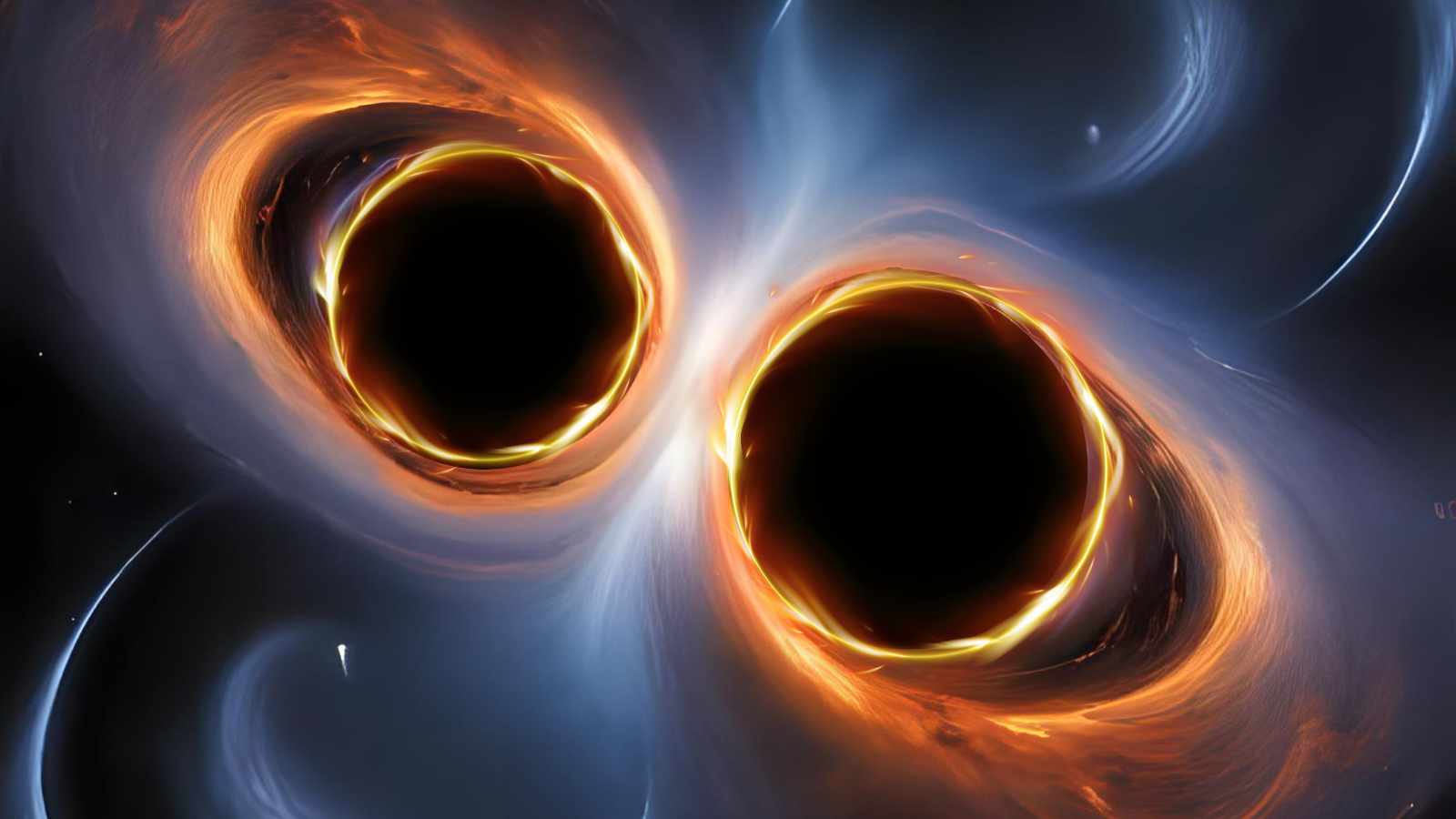Scientists have detected the most massive merger of black holes ever. This titanic collision, “heard” in ripples in spacetime called gravitational waves, involves black holes so massive that it could challenge current models of the universe.
The merger was detected by the gravitational wave detector network LIGO-Virgo-KAGRA (LVK) on Nov. 23, 2023, during the fourth observing run of these three sensitive laser interferometers located in the US, Italy, and Japan.
The merger event that set spacetime ringing with this gravitational wave signal, designated GW231123, involved progenitor black holes with masses of 100 and 140 times that of the sun. These two were so massive that when they merged, they created a “daughter” black hole 225 times the mass of our sun, with the missing mass converted to energy, propelling gravitational waves that rippled out from the violent event.
Prior to GW231123, the most massive black hole created in a merger and detected in gravitational waves had a mass of 140 times that of the sun. This was detected in 2021 as the signal GW190521.
“This is the most massive black hole binary we’ve observed through gravitational waves, and it presents a real challenge to our understanding of black hole formation,” LVK collaboration and Cardiff University researcher Mark Hannam said in a statement. “Black holes this massive are forbidden through standard stellar evolution models.
“One possibility is that the two black holes in this binary formed through earlier mergers of smaller black holes.”
The monstrous masses of these black holes are not the only things that make GW231123 so interesting. The signal seems to indicate that prior to the merger, at least one of the progenitor black holes was spinning rapidly. Perhaps as rapidly as the laws of physics allow, in fact.
“The black holes appear to be spinning very rapidly — near the limit allowed by Einstein’s theory of general relativity,” LVK member Charlie Hoy of the University of Portsmouth said. “That makes the signal difficult to model and interpret. It’s an excellent case study for pushing forward the development of our theoretical tools.”
Another record broken for LIGO and partners
The Laser Interferometer Gravitational-wave Observatory (LIGO) is no stranger to making history and breaking records. In 2015, its twin detectors based in Livingston, Louisiana, and Hanford, Washington, made the first ever detection of gravitational waves.
This detection came exactly a century after Einstein had first predicted the existence of gravitational waves in his 1915 theory of gravity, general relativity.
The signal, which would become known as GW150914, was the result of the merger of black holes that created a daughter black hole with a mass around 62 times that of the sun.
Since 2015, LIGO has been joined by the gravitational wave detectors Virgo and the Kamioka Gravitational Wave Detector (KAGRA). This resultant collaboration has now detected over 300 black hole mergers.
Over 200 of these detections have occurred in the fourth operating run of these instruments. As impressive as that is, the high-mass and rapid spin of the black holes that clashed to create GW231123 have pushed the limits of gravitational-wave detection technology and perhaps the bounds of current theoretical models, too.
“This event pushes our instrumentation and data-analysis capabilities to the edge of what’s currently possible,” LVK member and California Institute of Technology (Caltech) researcher Sophie Bini said. “It’s a powerful example of how much we can learn from gravitational-wave astronomy — and how much more there is to uncover.”
Fully unlocking the secrets of this signal and others that LVK detected up until the end of its fourth operating run in January 2024 will require the refinement of analysis and interpretation methods.
“It will take years for the community to fully unravel this intricate signal pattern and all its implications,” LVK team member Gregorio Carullo of the University of Birmingham said. “Despite the most likely explanation remaining a black hole merger, more complex scenarios could be the key to deciphering its unexpected features.
“Exciting times ahead!”
GW231123 was presented at the 24th International Conference on General Relativity and Gravitation (GR24) and the 16th Edoardo Amaldi Conference on Gravitational Waves in Glasgow, Scotland, on Monday (July 14).
